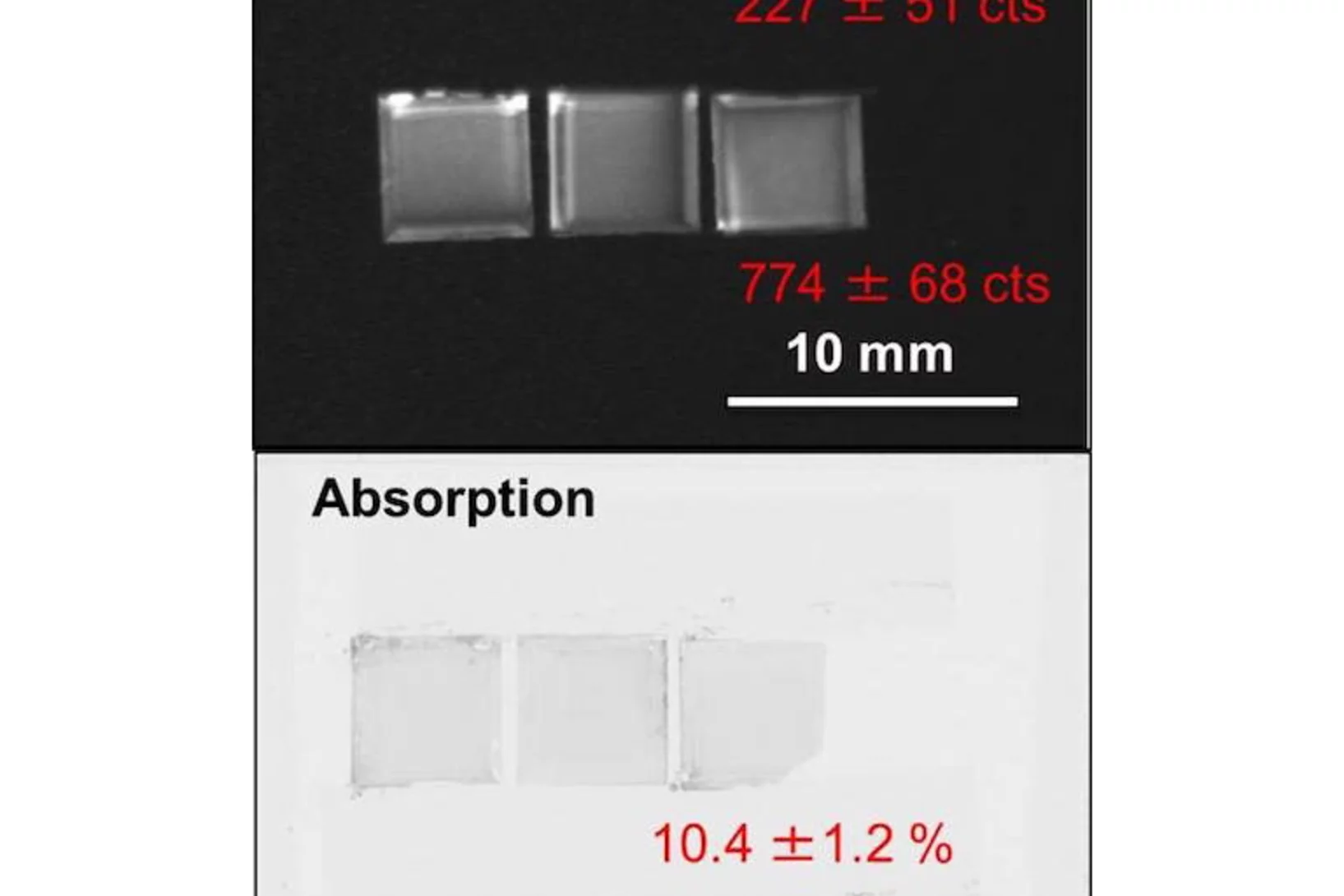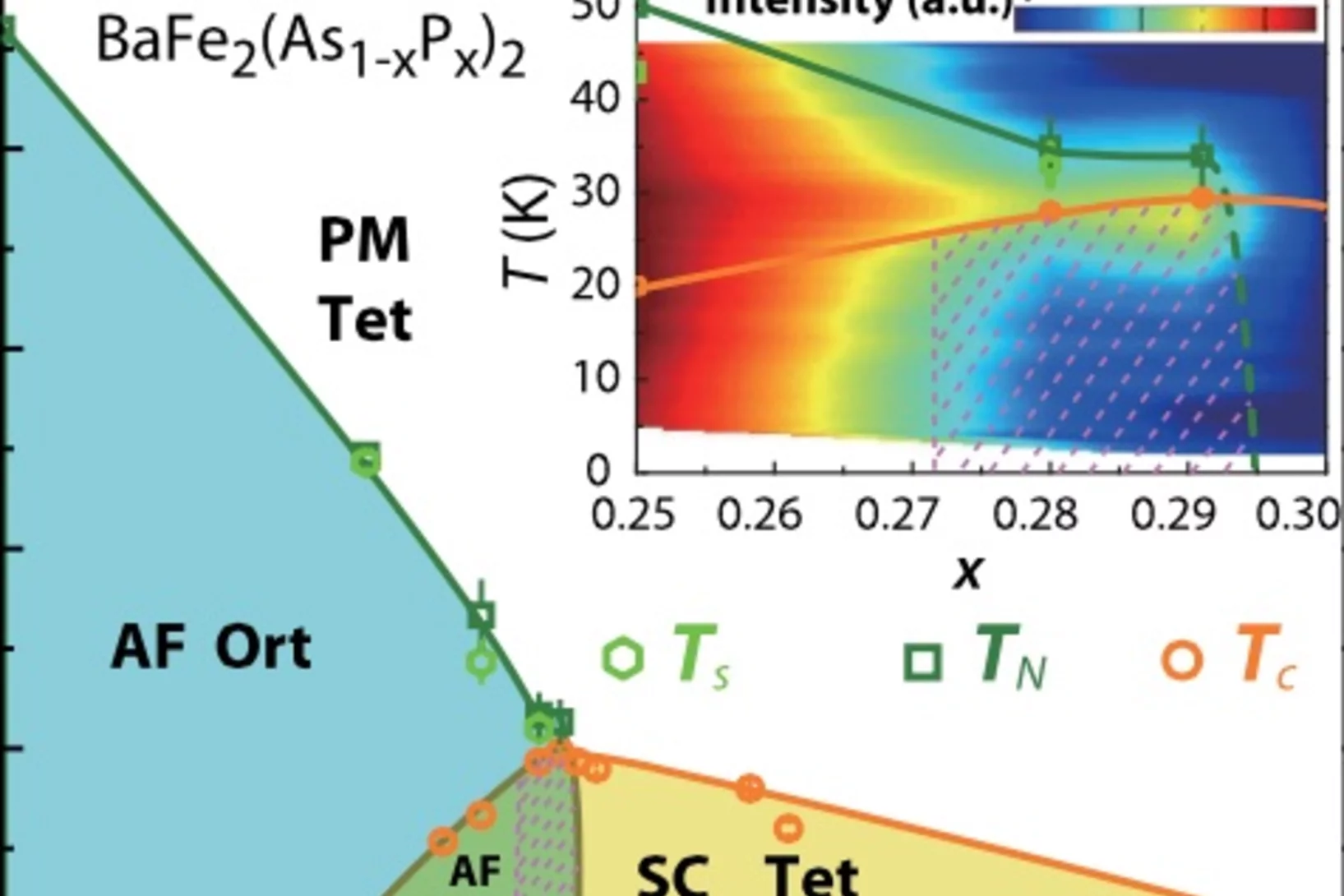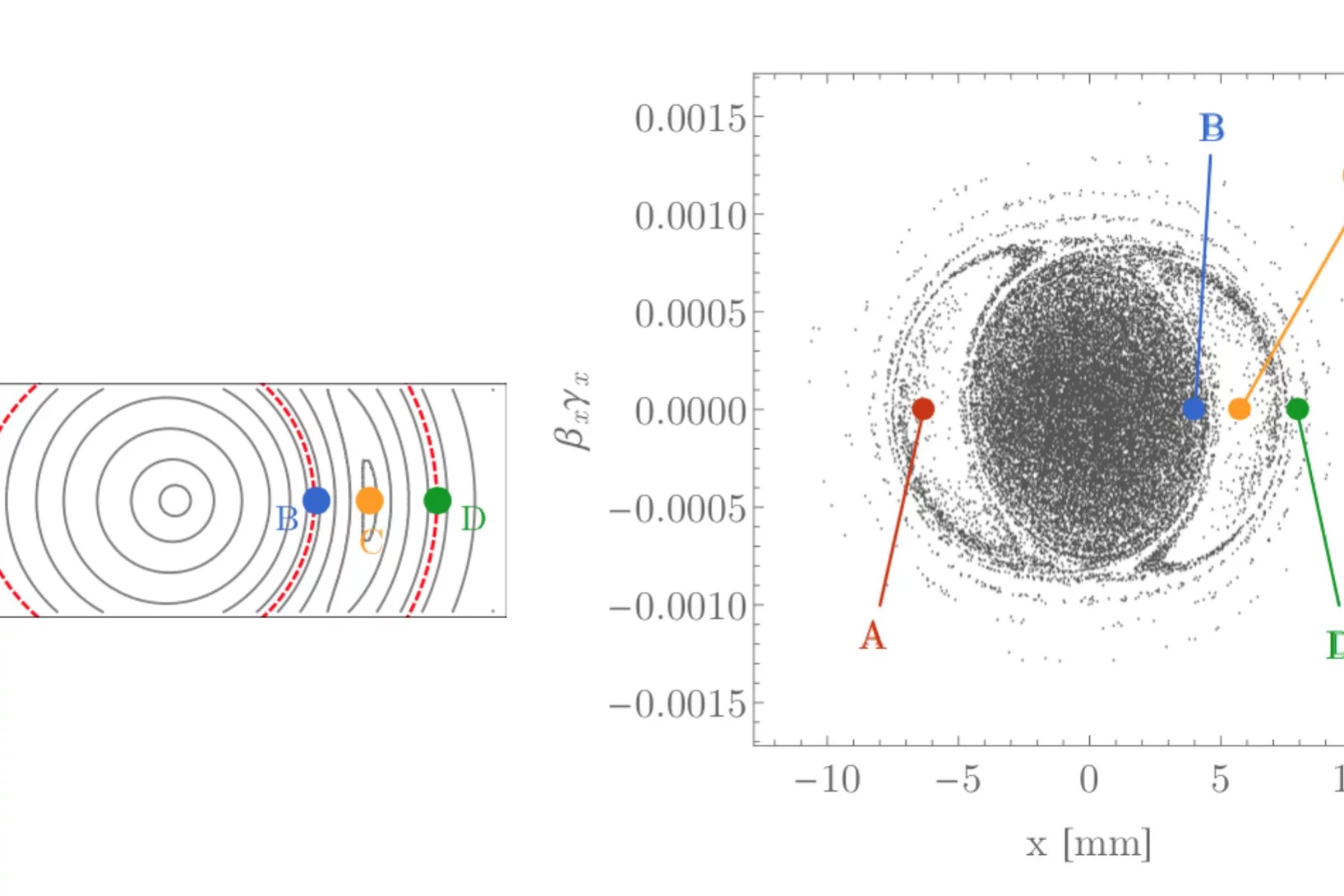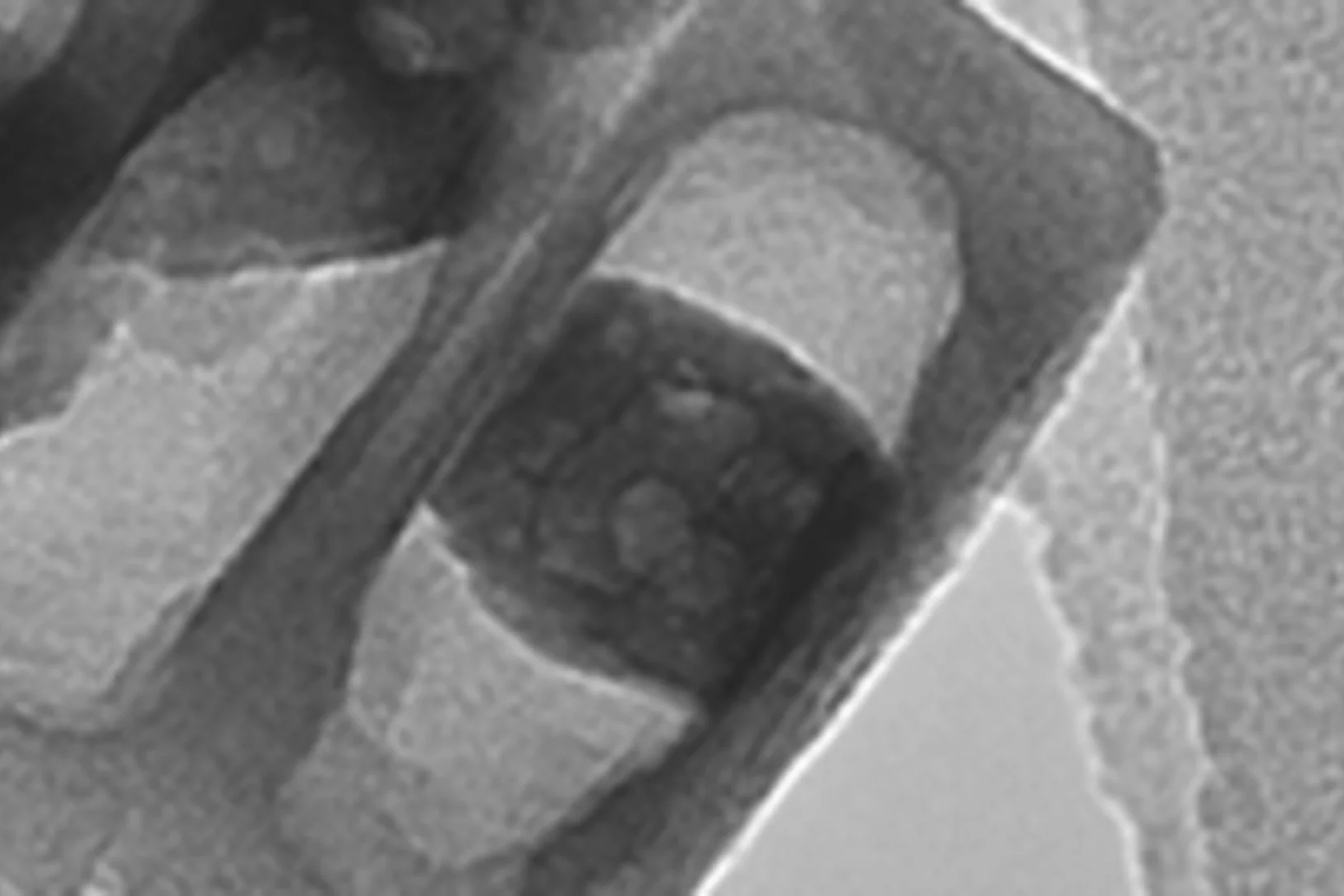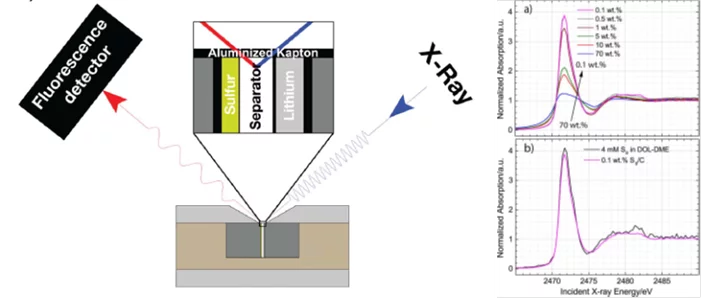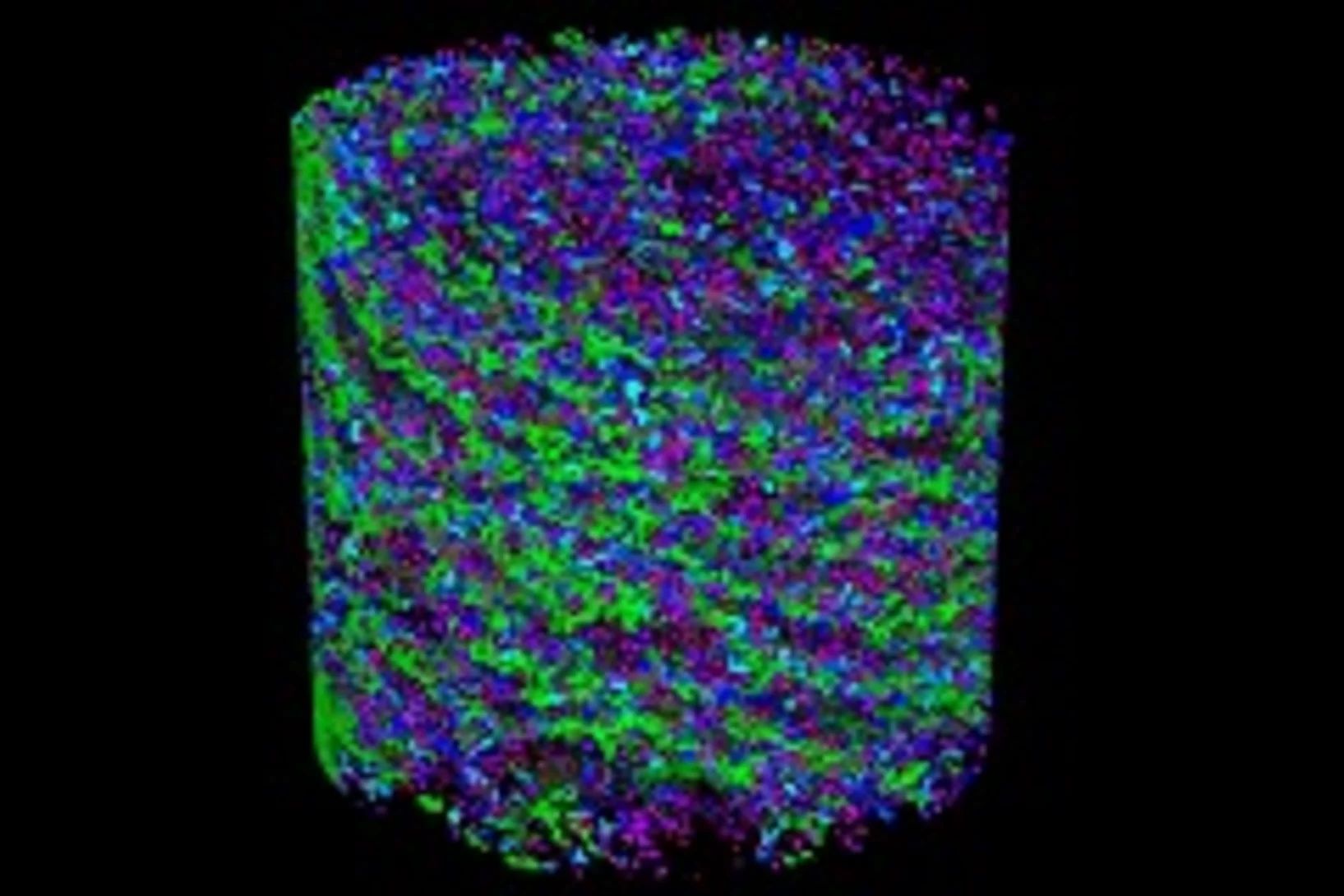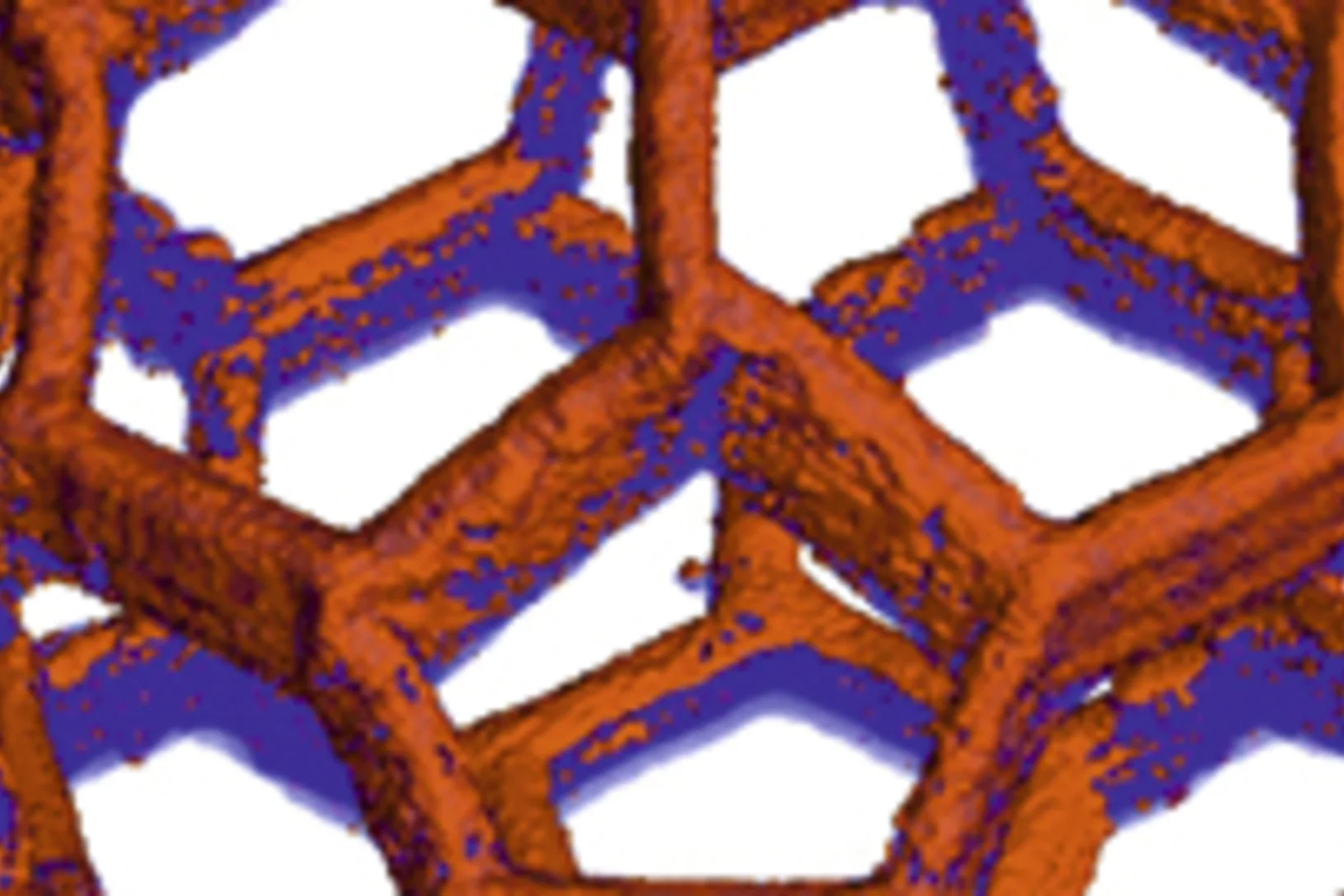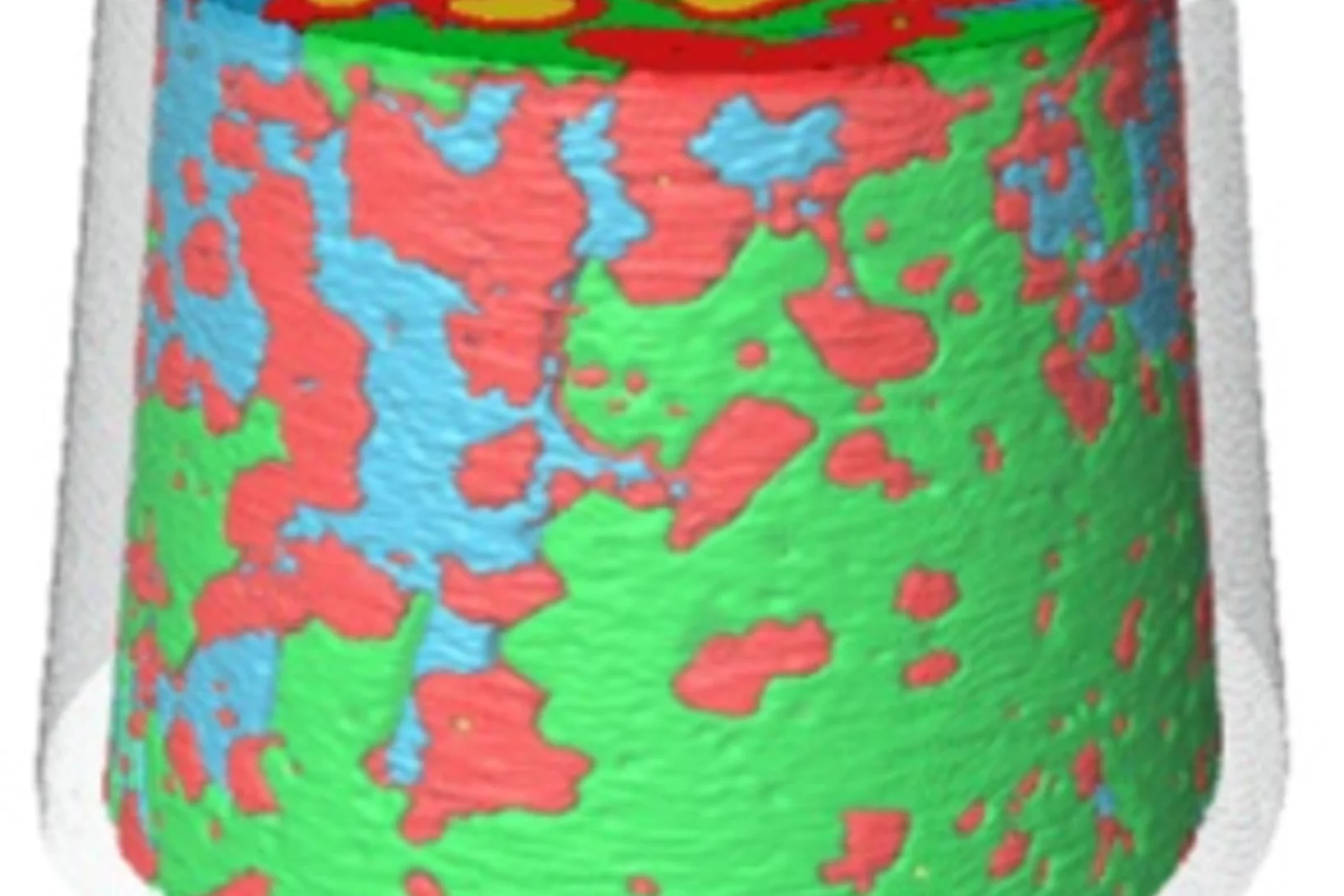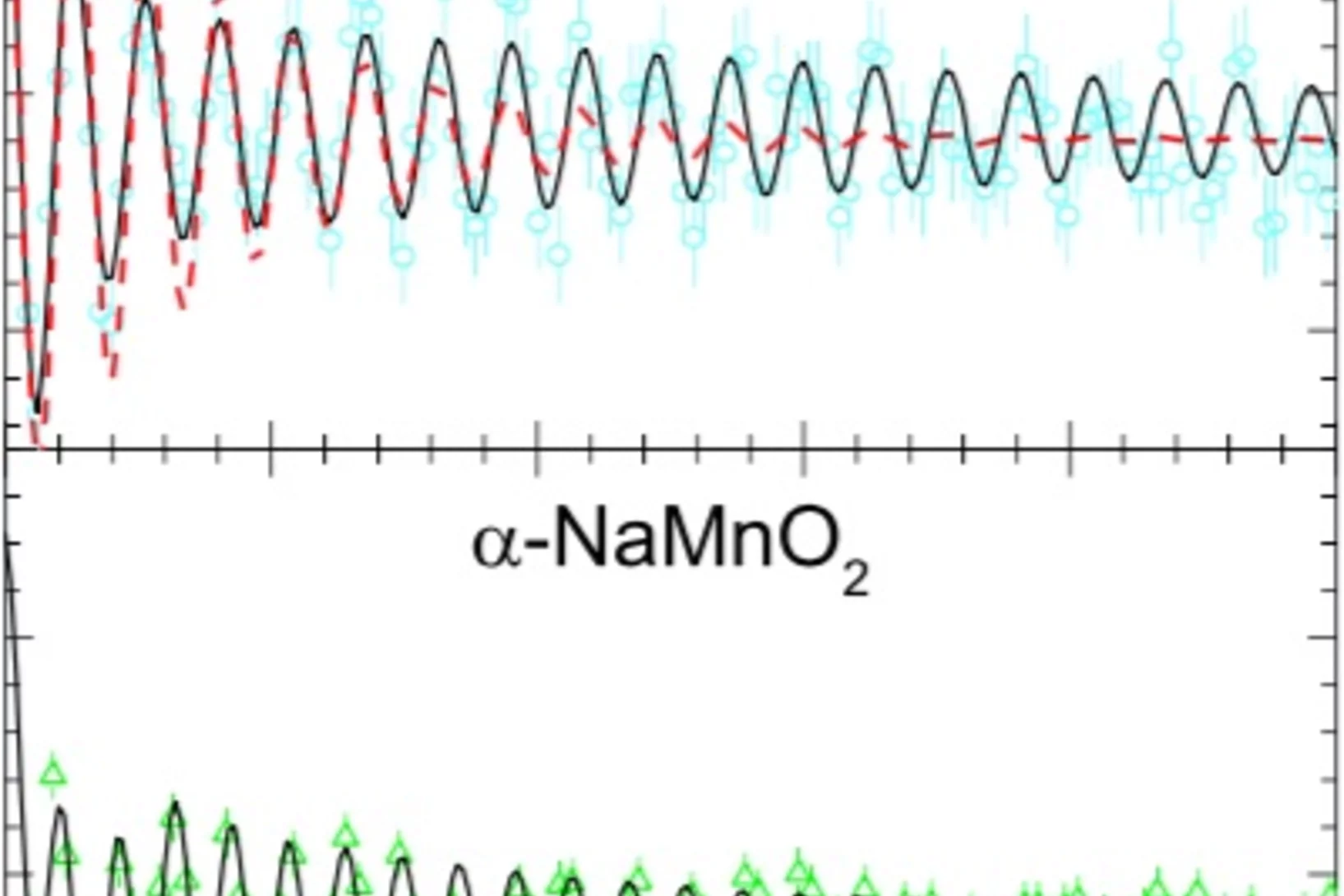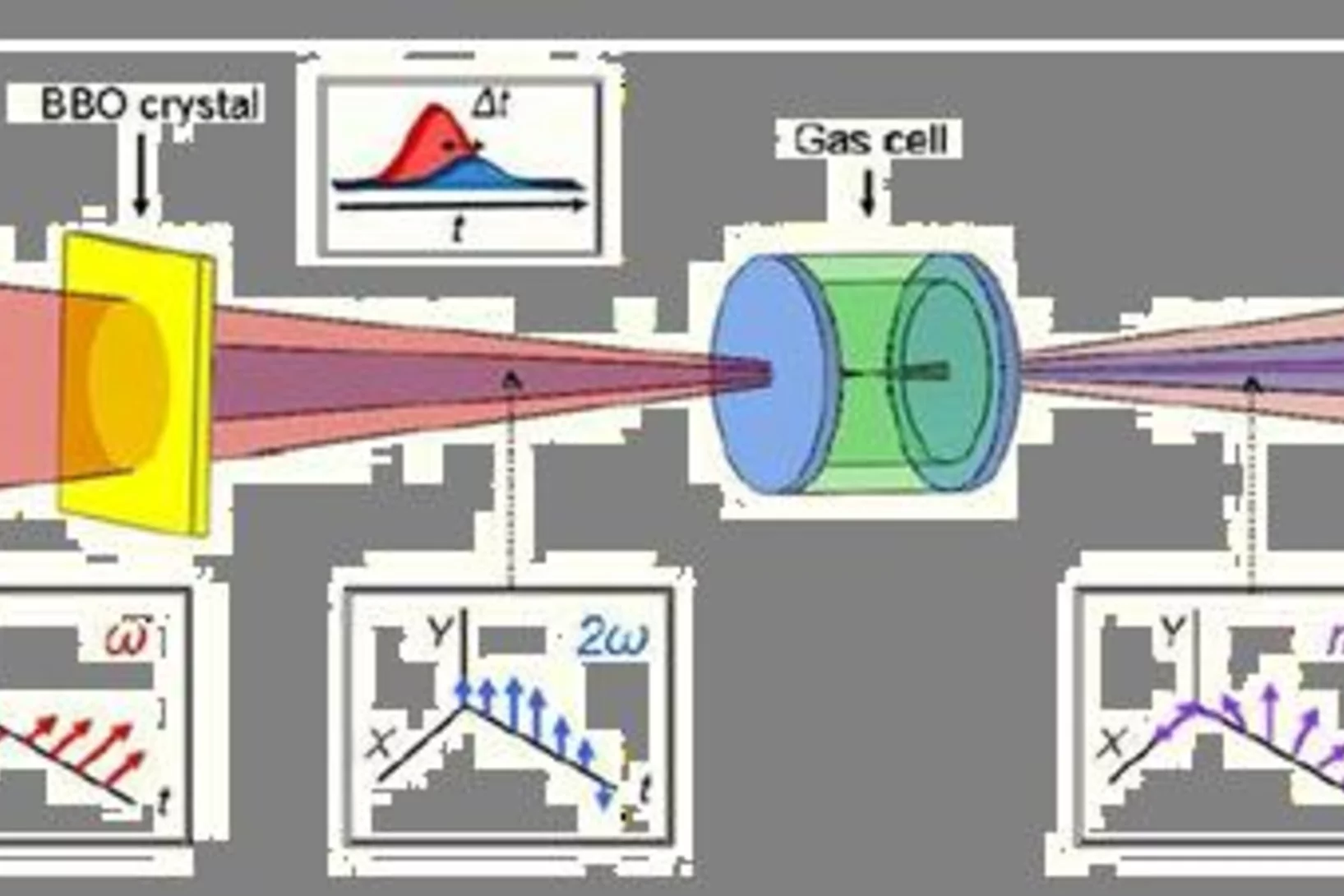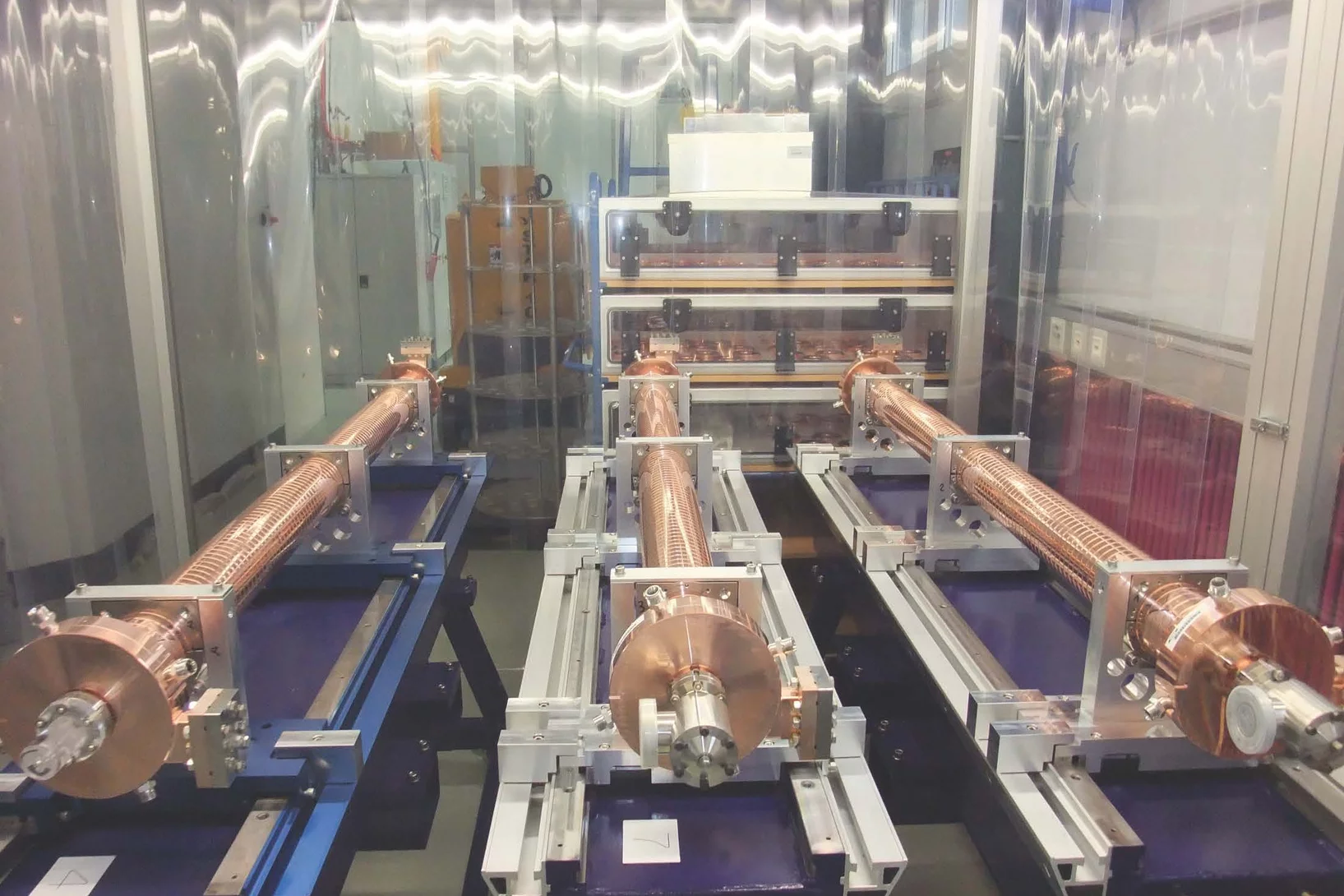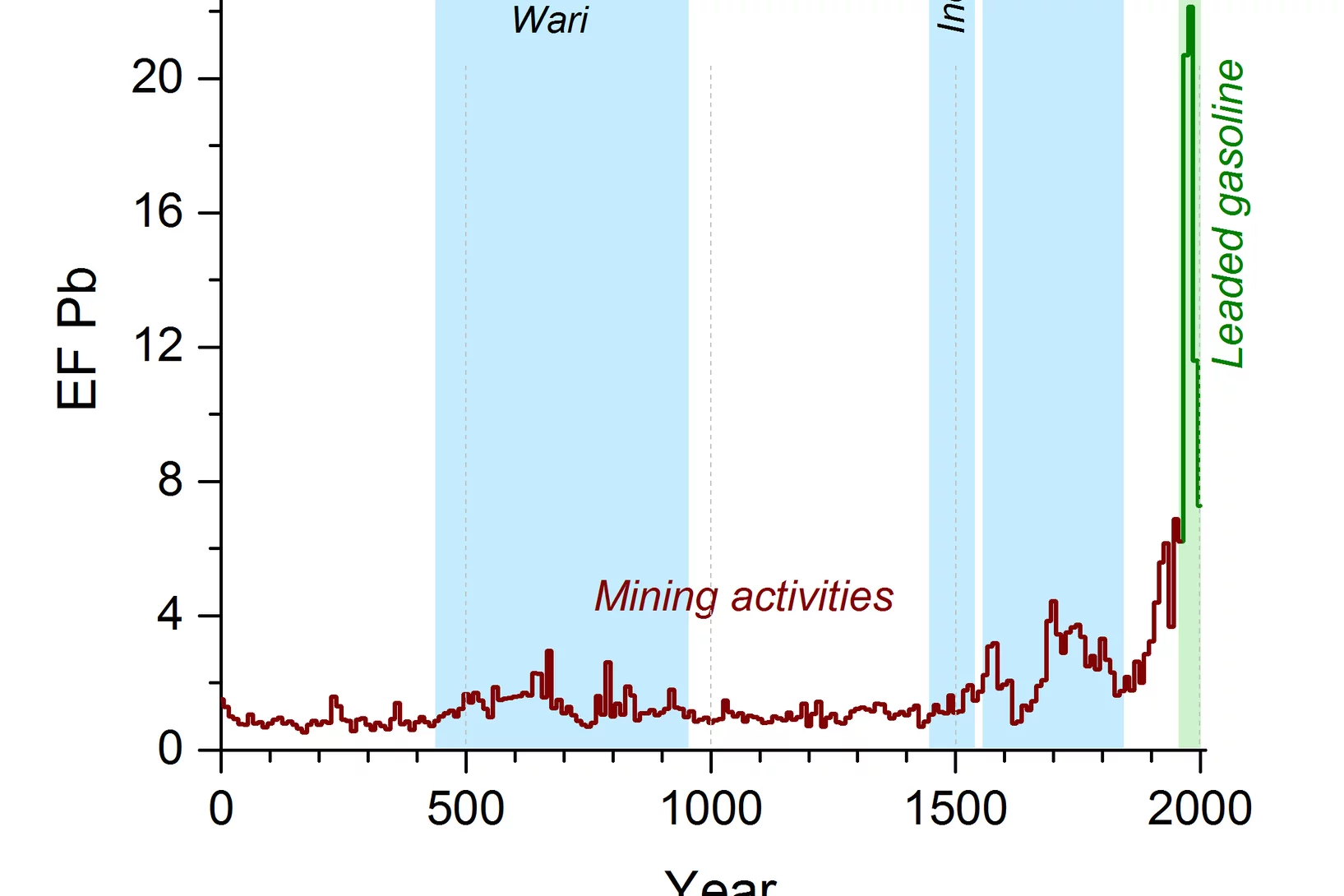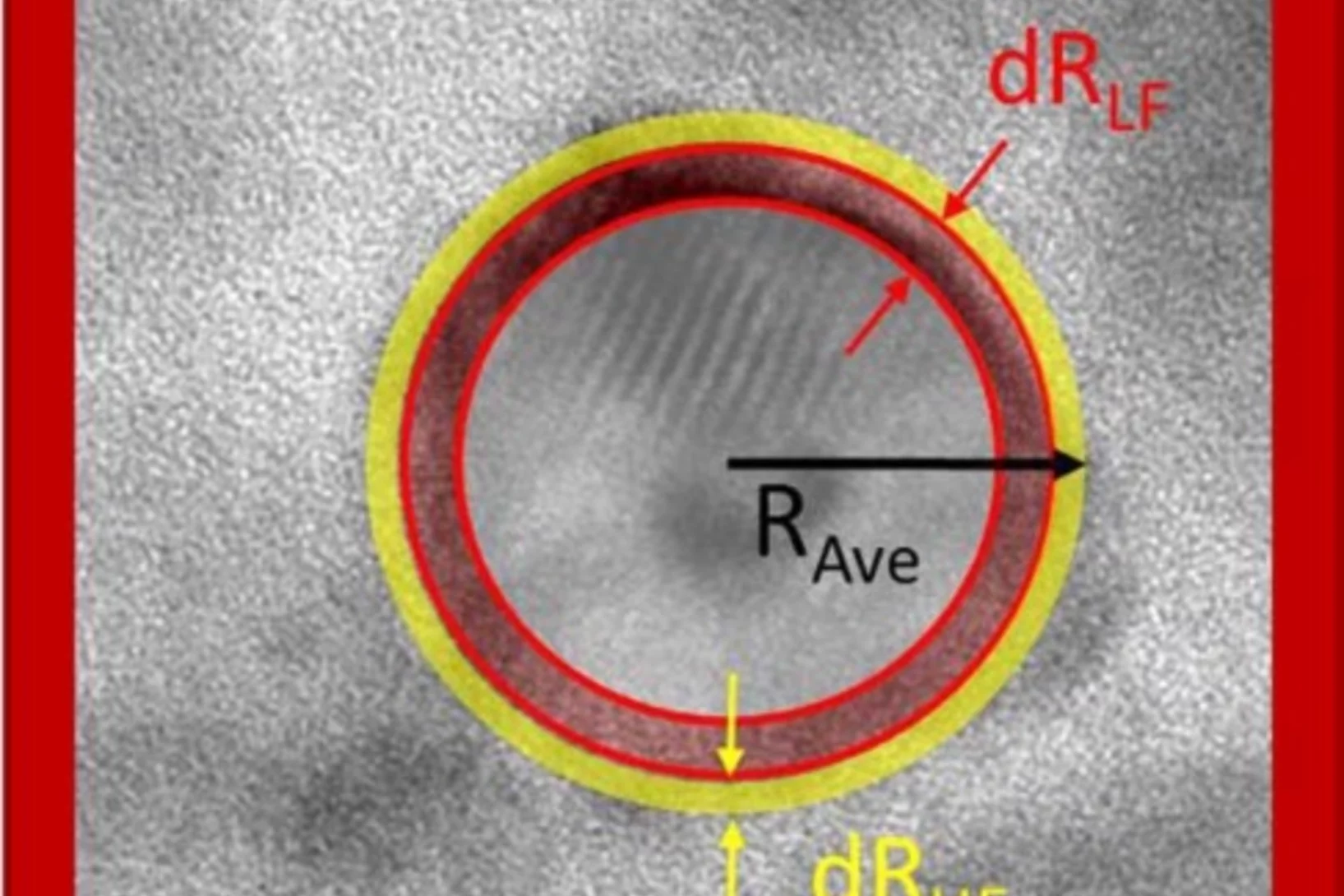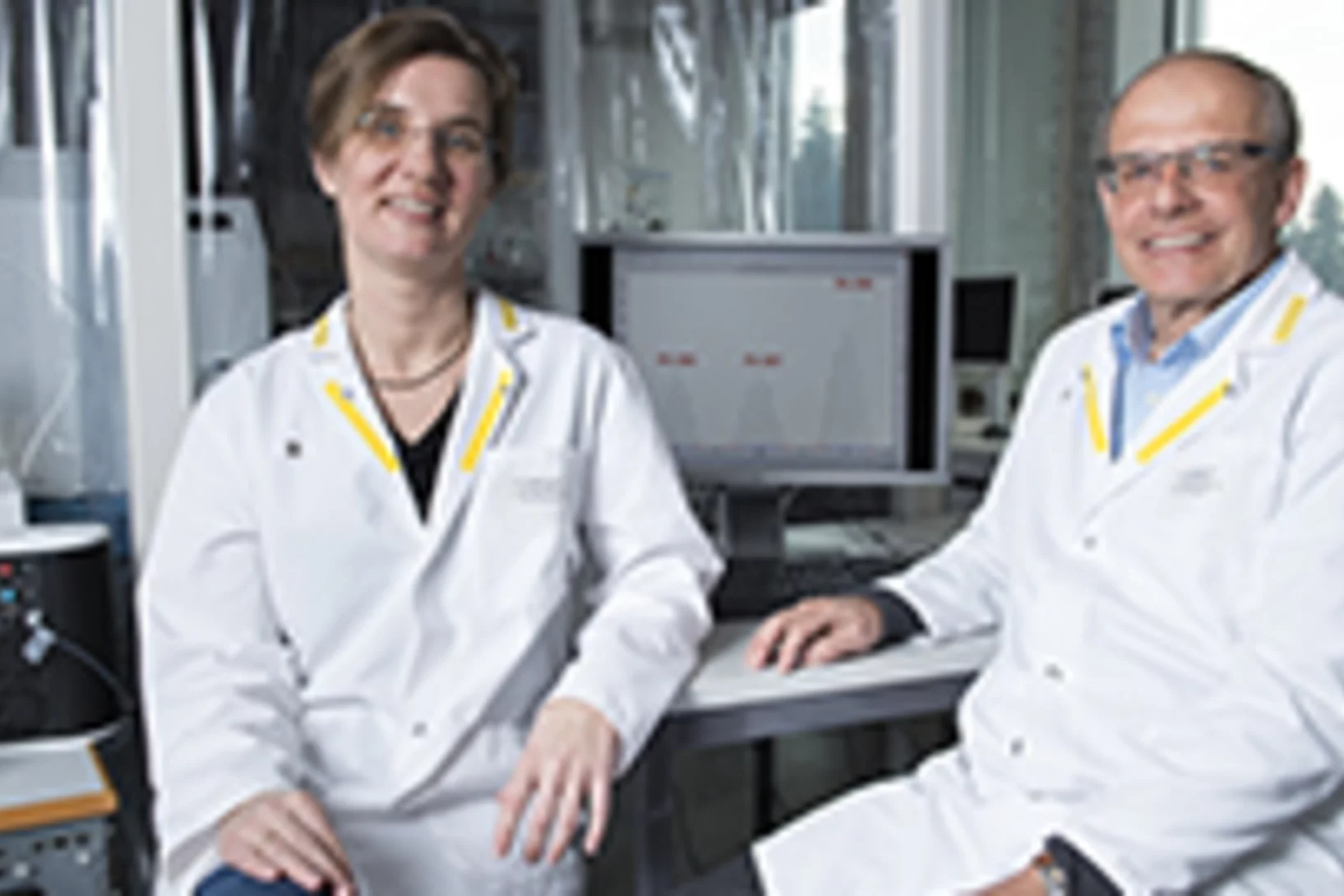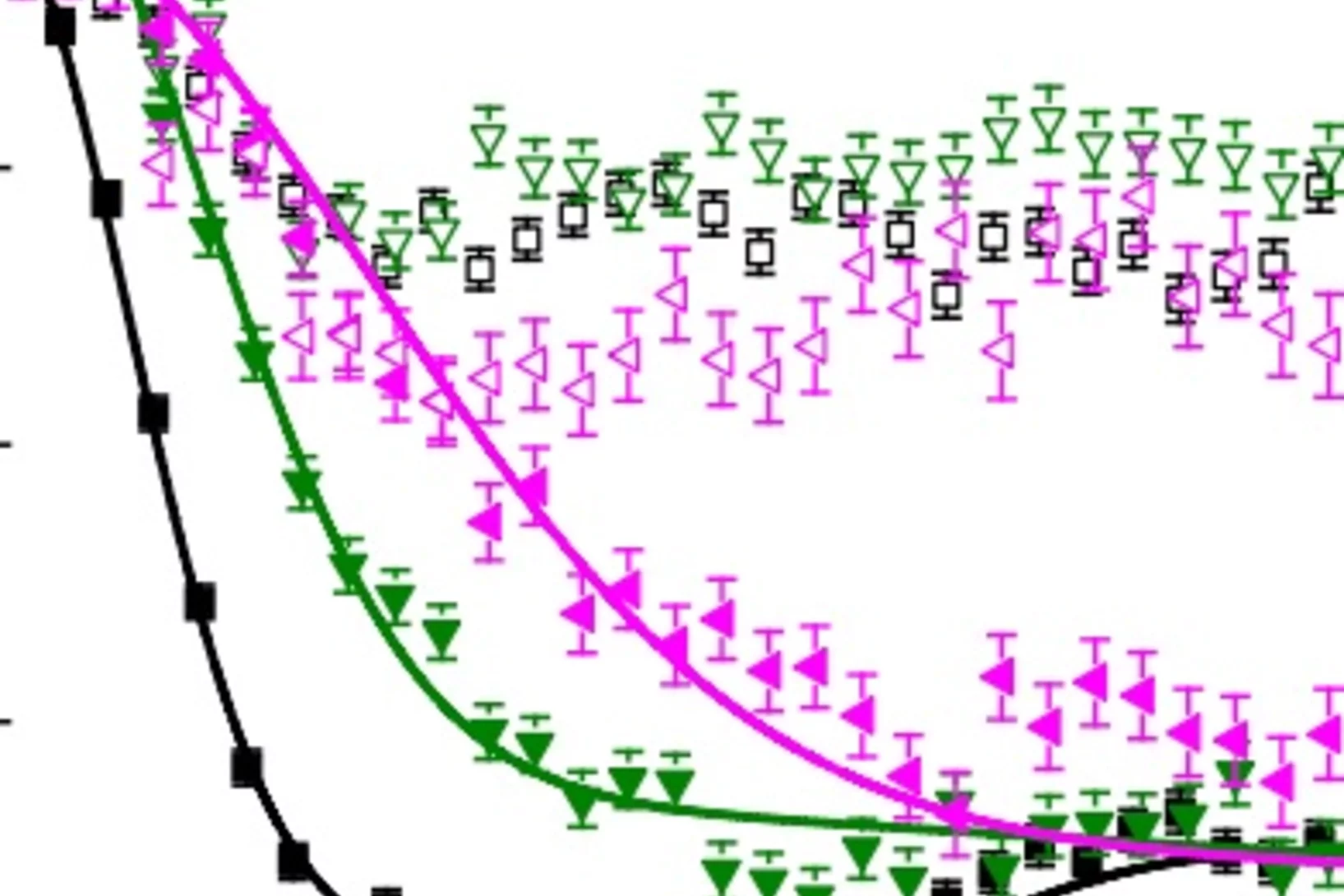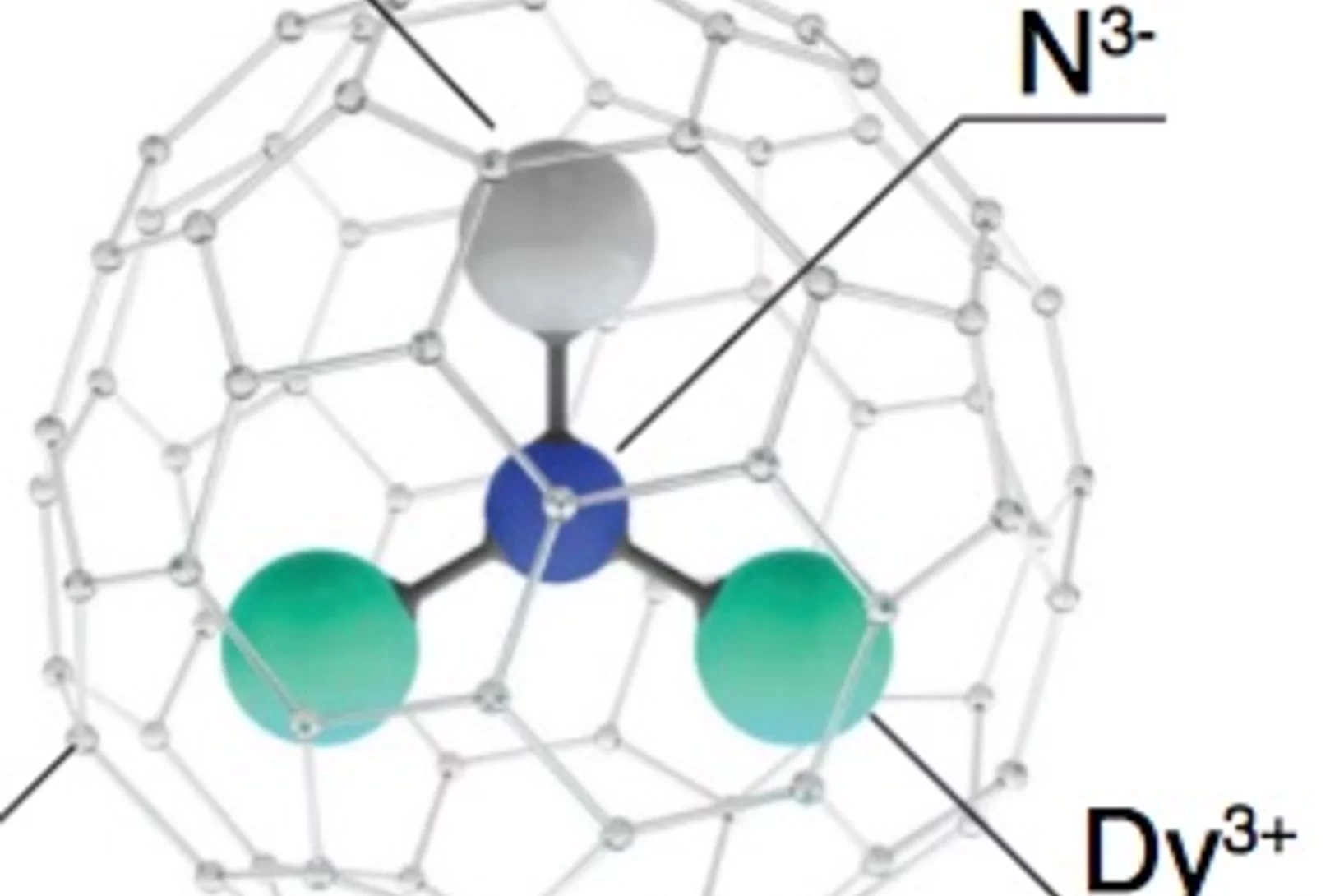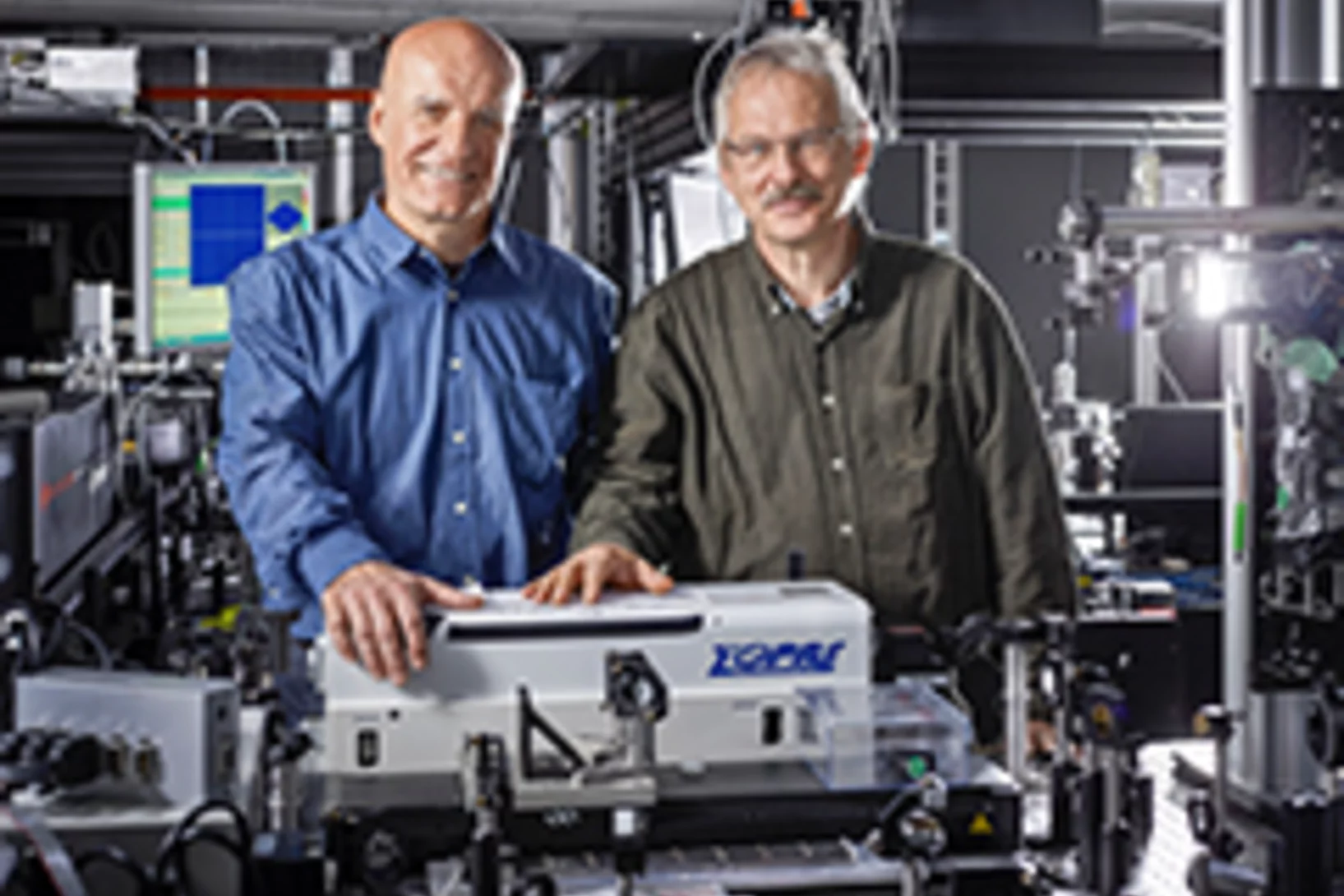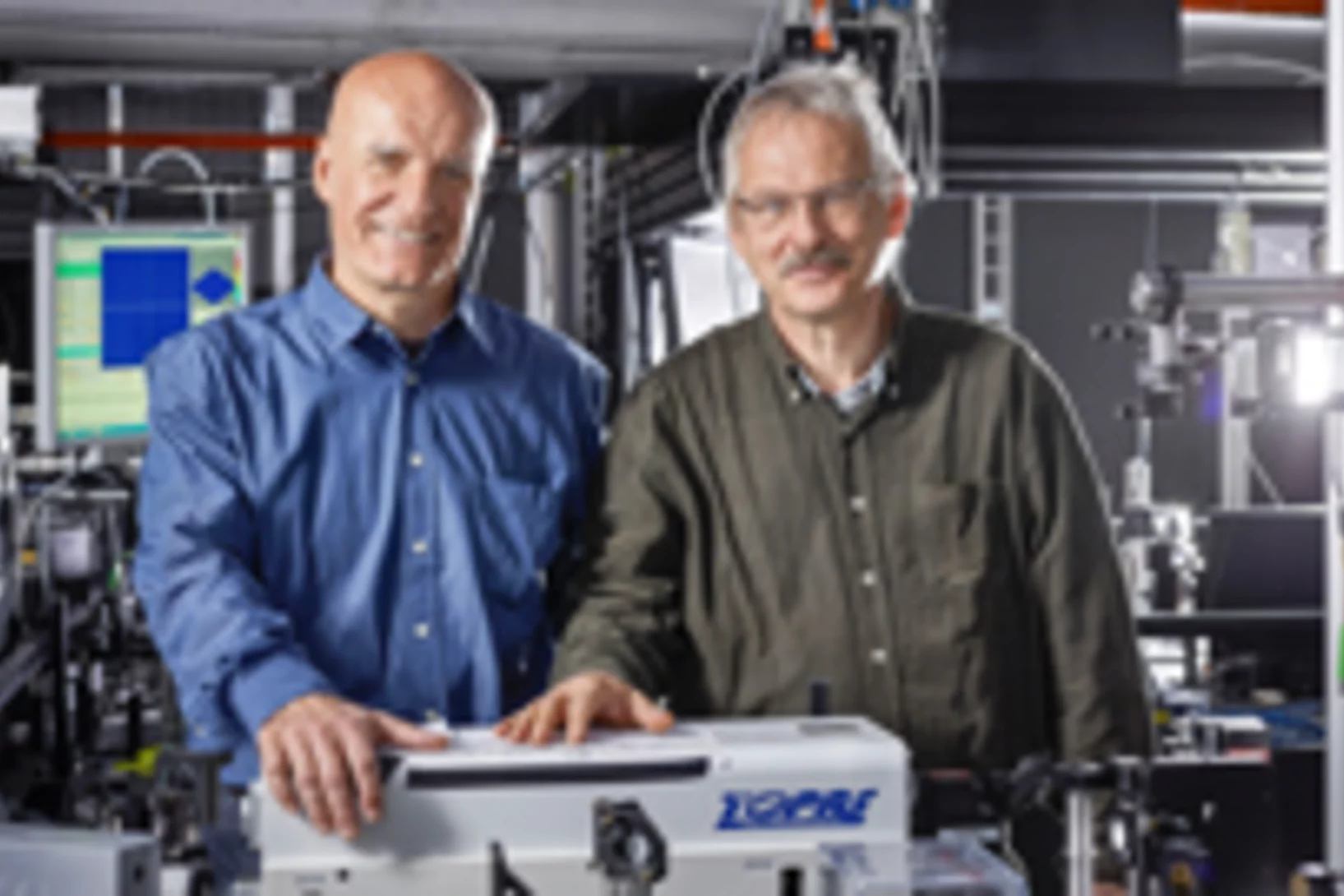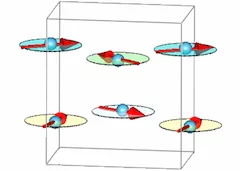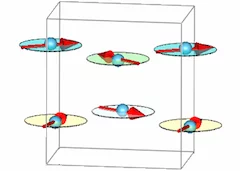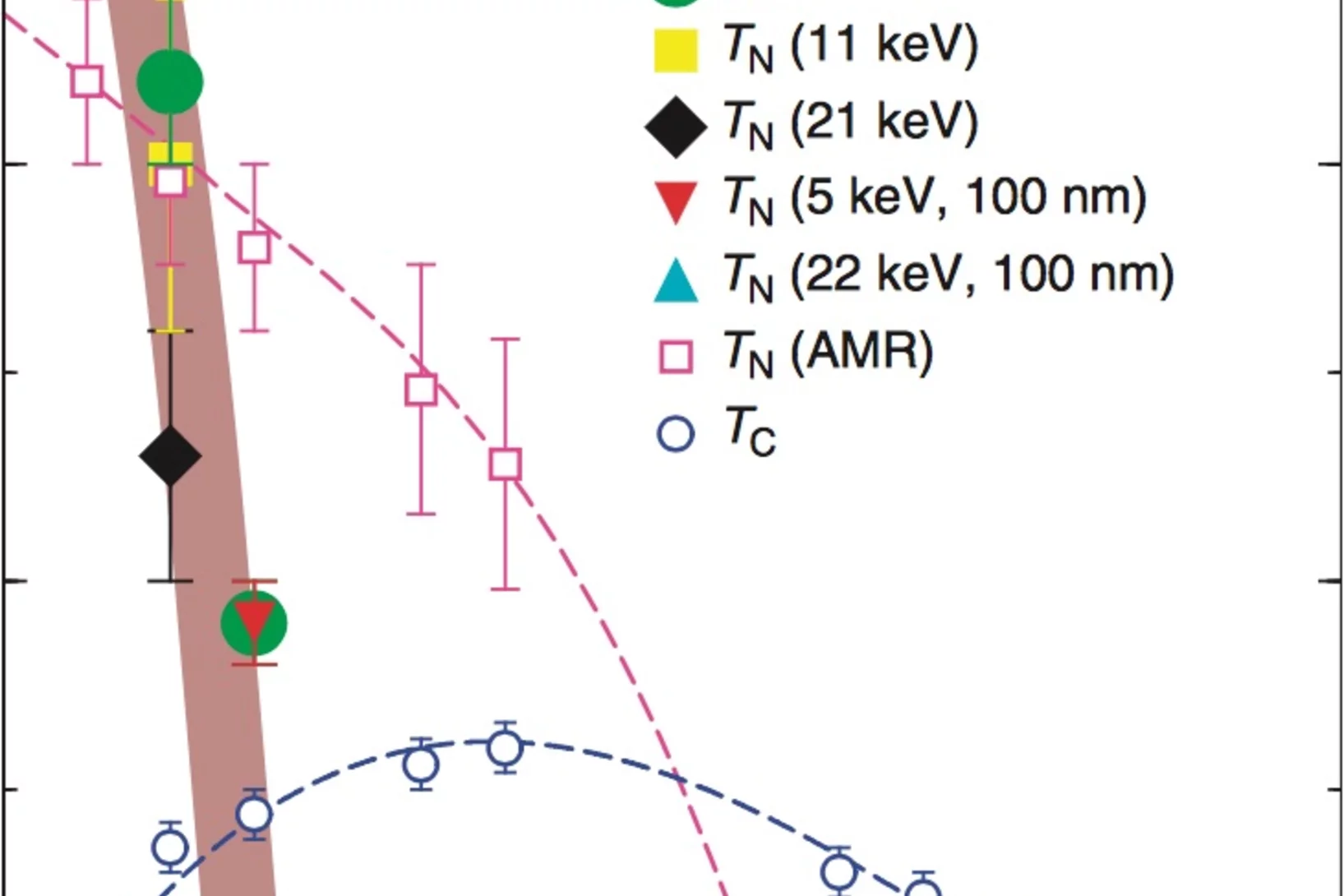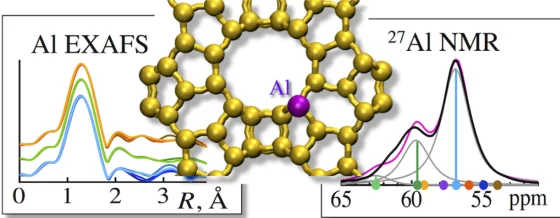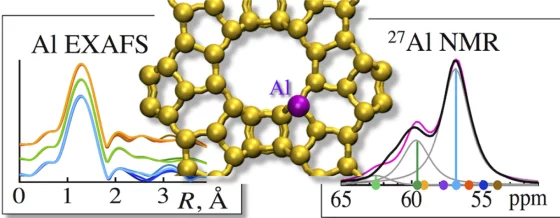Shifting away from nuclear energy, expanding solar and wind power, generating energy from biomass, reducing energy consumption. Switzerland is committed to becoming climate-neutral by 2050. An ambitious goal, which has become more urgent than ever due to the increasingly challenging geopolitical situation. How can a sustainable and resilient energy supply for Switzerland be established over the coming years? What's the optimal way to use renewable energy sources? What new technologies are especially promising? At PSI, researchers are seeking answers to these crucial questions.
Isotopically-enriched gadolinium-157 oxysulfide scintillator screens for the high-resolution neutron imaging
High-resolution neutron imaging (Neutron Microscope project) requires highly efficient scintillator screens. Our aim is to achieve sub-5µm spatial resolution. Here, we demonstrate the feasibility of the production of isotopically-enriched gadolinium oxysulfide scintillator screens for the high spatial-resolution neutron imaging. Approximately 10 g of 157Gd2O2S:Tb was produced in the form of fine powder (the level of 157Gd enrichment above 88%).
Structural and Magnetic Phase Transitions near Optimal Superconductivity in BaFe2(As1-xPx)2
We use nuclear magnetic resonance (NMR), high-resolution x-ray, and neutron scattering studies to study structural and magnetic phase transitions in phosphorus-doped BaFe2(As1-xPx)2. Previous transport, NMR, specific heat, and magnetic penetration depth measurements have provided compelling evidence for the presence of a quantum critical point (QCP) near optimal superconductivity at x=0.3.
ETH-Medal 2015 for outstanding MSc thesis
The detailed understanding of particle motion in the outer region (halo) of a bunched beam is of utmost importance for all existing and future high intensity hadron accelerators in view of minimizing particle losses and machine activation. Particle-core models separate the motion of halo particles from the core and treat them as test-particles. Therefore these reduced-order models are computationally inexpensive compared to full particle-in-cell simulations and can, to some extent, be derived analytically, thus giving insights into the non-linear mechanism of halo formation.
Gasoline from a nanoreactor
Researchers from the Paul Scherrer Institute (PSI) and ETH Zurich have developed a miniscule chemical reactor in the lab that could one day be used to produce gasoline and diesel more sustainably and cost-effectively than today. By specifically modifying nanometre-sized, porous zeolite crystals, the scientists built a nanoreactor that is able to complete two of the conversion steps for the production of hydrocarbons.
Operando Characterization of a LiS Battery
One of the technological barriers to electrification of transport is the insufficient storage capacity of the Li-ion batteries on which the current electric cars are based. The lithium-sulfur (Li-S) battery is an advanced technology whose successful commercialization can lead to significant gains in the storage capacity of batteries and promote wide-spread adoption of electric vehicles.
Multiresolution X-ray tomography, getting a clear view of the interior
Researchers at PSI have developed a technique that combines tomography measurements at different resolution levels to allow quantitative interpretation for nanoscale tomography on an interior region of interest of the sample. In collaboration with researchers of the institute AMOLF in the Netherlands and ETH Zurich in Switzerland they showcase their technique by studying the porous structure within a section of an avian eggshell. The detailed measurements of the interior of the sample allowed the researchers to quantify the ordering and distribution of an intricate network of pores within the shell.
Split x-ray flash shows rapid processes
SwissFEL, PSI’s x-ray laser, is to render the individual steps of very rapid processes visible. A new method will facilitate especially precise experiments: the individual x-ray flashes are split into several parts that arrive at the object under examination one by one. The principle of the method harks back to the ideas of the earliest high-speed photography.
Nanometres in 3D
Scientists at the Paul Scherrer Institute and ETH Zurich have created 3D images of tiny objects showing details down to 25 nanometres. In addition to the shape, the scientists determined how particular chemical elements were distributed in their sample and whether these elements were in a chemical compound or in their pure state.
Mass Density and Water Content of Saturated Never-Dried Calcium Silicate Hydrates
Calcium silicate hydrates (C-S-H) are the most abundant hydration products in ordinary Portland cement paste. Yet, despite the critical role they play in determining mechanical and transport properties, there is still a debate about their density and exact composition. Here, the site-specific mass density and composition of C-S-H in hydrated cement paste are determined with nanoscale resolution in a nondestructive approach.
Magnetic inhomogeneity on a triangular lattice: the magnetic-exchange versus the elastic energy and the role of disorder
Inhomogeneity in the ground state is an intriguing, emergent phenomenon in magnetism. Recently, it has been observed in the magnetostructural channel of the geometrically frustrated α-NaMnO2, for the first time in the absence of active charge degrees of freedom. Here we report an in-depth numerical and local-probe experimental study of the isostructural sister compound CuMnO2 that emphasizes and provides an explanation for the crucial differences between the two systems.
Table-top soft x-ray lasers based on high-order harmonic generation (HHG)
Table-top soft x-ray lasers based on high-order harmonic generation (HHG) deliver routinely linearly polarized light. Many advanced applications including magnetic imaging would profit from a HHG source delivering in addition circular polarized light. In one of our recent work we present now an approach which provides intense soft x-ray radiation of high ellipticity. This source has given us the opportunity to realize the first magnetic dichroism experiment on a nickel sample at 18 nm (67 eV) with a table-top HHG source.
PSI-Feriencamp 2015
Suchen Sie für Ihr Kind ein spannendes Angebot während den Sommerferien? Möchten Sie in ihm die Neugier und Begeisterung für naturwissenschaftlich-technische Themen wecken? Die Berufsbildung und das Komitee für Chancengleichheit führt dieses Jahr zum achten Mal das PSI-Feriencamp durch!
Successful start of the series production of the C-band accelerating structures for SwissFEL
A total of 104 C-band accelerating structures will be needed for SwissFEL. Each of these structures is about 2 m long and consists out of 113 copper cells that are manufactured with micrometer precision using ultra-precision diamond machining, which results in mirror-like surfaces. The main components are the couplers at the input and the output of the structure, and the copper disks. For both, couplers and disks, the series production was successfully launched at the end of 2014. Since then the Dutch company VDL and TEL Mechatronics in Trübbach, Switzerland, delivered already many sets of couplers and accelerating disks, respectively.
Pb pollution from leaded gasoline in South America in the context of a 2000-year metallurgical history
Exploitation of the extensive polymetallic deposits of the Andean Altiplano in South America since precolonial times has caused substantial emissions of neurotoxic lead (Pb) into the atmosphere; however, its historical significance compared to recent Pb pollution from leaded gasoline is not yet resolved. We present a comprehensive Pb emission history for the last two millennia for South America, based on a continuous, high-resolution, ice core record from Illimani glacier. Illimani is the highest mountain of the eastern Bolivian Andes and is located at the northeastern margin of the Andean Altiplano.
Interfacial dominated ferromagnetism in nanograined ZnO: a μSR and DFT study
Diamagnetic oxides can, under certain conditions, become ferromagnetic at room temperature and therefore are promising candidates for future material in spintronic devices. Contrary to early predictions, doping ZnO with uniformly distributed magnetic ions is not essential to obtain ferromagnetic samples. Instead, the nanostructure seems to play the key role, as room temperature ferromagnetism was also found in nanograined, undoped ZnO.
Gasoline beats mining
Until it was banned, leaded gasoline dominated the manmade lead emissions in South AmericaLeaded gasoline was a larger emission source of the toxic heavy metal lead than mining in South America à even though the extraction of metals from the region’s mines historically released huge quantities of lead into the environment. Researchers from the Paul Scherrer Institute PSI and the University of Bern have discovered evidence of the dominance of leaded gasoline based on measurements in an ice core from a Bolivian glacier. The scientists found that lead from road traffic in the neighbouring countries polluted the air twice as heavily as regional mining from the 1960s onwards. The study is to be published in the journal Science Advances on 6 March 2015.
Non-Fermi Liquid Behavior Close to a Quantum Critical Point in a Ferromagnetic State without Local Moments
A quantum critical point (QCP) occurs upon chemical doping of the weak itinerant ferromagnet Sc3.1In. Remarkable for a system with no local moments, the QCP is accompanied by non-Fermi liquid behavior, manifested in the logarithmic divergence of the specific heat both in the ferro-and the paramagnetic states, as well as linear temperature dependence of the low-temperature resistivity.
Surface Aligned Magnetic Moments and Hysteresis of an Endohedral Single-Molecule Magnet on a Metal
The interaction between the endohedral unit in the single-molecule magnet Dy2ScN@C80 and a rhodium (111) substrate leads to alignment of the Dy 4f orbitals. The resulting orientation of the Dy2ScN plane parallel to the surface is inferred from comparison of the angular anisotropy of x-ray absorption spectra and multiplet calculations in the corresponding ligand field.
Prospective studies for SwissFEL experiments done at the SLS FEMTO station
For many years, PSI researchers have been testing experimental methods that will provide insights into novel materials for electronic devices. Using a special trick to make the Swiss Light Source (SLS) at PSI generate light with similar properties to that of PSI's x-ray laser SwissFEL, the researchers were able to demonstrate that the experiments planned for SwissFEL are possible and they are now building an experimental station at SwissFEL. read the full story)
Prepared for the SwissFEL
For many years, PSI researchers have been testing experimental methods that will provide insights into novel materials for electronic devices. Using a special trick to make the Swiss Light Source (SLS) at PSI generate light with similar properties to that of PSI’s x-ray laser SwissFEL, the researchers were able to demonstrate that the experiments planned for SwissFEL are possible and they are now building an experimental station at SwissFEL.
Muonium in Stishovite: Implications for the Possible Existence of Neutral Atomic Hydrogen in the Earth's Deep Mantle
Hydrogen in the Earth's deep interior has been thought to exist as a hydroxyl group in high-pressure minerals. We present Muon Spin Rotation experiments on SiO2 stishovite, which is an archetypal high-pressure mineral. Positive muon (which can be considered as a light isotope of proton) implanted in stishovite was found to capture electron to form muonium (corresponding to neutral hydrogen).
Magnetic inhomogeneity on a triangular lattice: the magnetic-exchange versus the elastic energy and the role of disorder
Inhomogeneity in the ground state is an intriguing, emergent phenomenon in magnetism. Recently, it has been observed in the magnetostructural channel of the geometrically frustrated α-NaMnO2, for the first time in the absence of active charge degrees of freedom. Here we report an in-depth numerical and local-probe experimental study of the isostructural sister compound CuMnO2 that emphasizes and provides an explanation for the crucial differences between the two systems.
PSI expertise boosts research for the energy transition
Researchers from the Paul Scherrer Institute (PSI) are involved in several projects under the new National Research Programme Energy Turnaround (NRP70) of the Swiss National Science Foundation (SNSF). The PSI experts tackle issues such as particle emissions from wood heating systems, the holistic evaluation of energy systems and the production of semiconductor components for novel transformers.
Ultrafast structural dynamics of the Fe-pnictide parent compound BaFe2As2
Understanding the interplay of the various degrees of freedom such as the electrons, spins and lattice is essential for many complex materials, including the high-temperature superconductors.
Pressure dependence of the magnetic order in CrAs
The suppression of magnetic order with pressure concomitant with the appearance of pressure-induced superconductivity was recently discovered in CrAs. Here we present a neutron diffraction study of the pressure evolution of the helimagnetic ground state towards and in the vicinity of the superconducting phase. Neutron diffraction on polycrystalline CrAs was employed from zero pressure to 0.65 GPa and at various temperatures.
Pressure dependence of the magnetic order in CrAs
L. Keller et al., Phys. Rev. B 91, 020409(R) (2015). The suppression of magnetic order with pressure concomitant with the appearance of pressure-induced superconductivity was recently discovered in CrAs. Here we present a neutron diffraction study of the pressure evolution of the helimagnetic ground state towards and in the vicinity of the superconducting phase. Neutron diffraction on polycrystalline CrAs was employed from zero pressure to 0.65 GPa and at various temperatures.
The phase diagram of electron-doped La2-xCexCuO4-δ
Superconductivity is a striking example of a quantum phenomenon in which electrons move coherently over macroscopic distances without scattering. The high-temperature superconducting oxides (cuprates) are the most studied class of superconductors, composed of two-dimensional CuO2 planes separated by other layers that control the electron concentration in the planes. A key unresolved issue in cuprates is the relationship between superconductivity and magnetism.
New laser for computer chips
Germanium-Zinn-Halbleiterlaser lässt sich direkt auf Siliziumchips aufbringenWinzige Laser, die in Computerchips aus Silizium eingebaut werden, sollen in Zukunft die Kommunikation innerhalb der Chips und zwischen verschiedenen Bauteilen eines Computers beschleunigen. Lange suchten Experten nach einem dafür geeigneten Lasermaterial, das sich mit dem Fertigungsprozess von Siliziumchips vereinbaren lässt. Wissenschaftler des Forschungszentrums Jülich und des Paul Scherrer Instituts PSI haben hier nun einen wichtigen Fortschritt erzielt.This news release is only available in German.
Quantitatively Probing the Al Distribution in Zeolites
The degree of substitution of Si4+ by Al3+ in the oxygen-terminated tetrahedra (Al T-sites) of zeolites determines the concentration of ion-exchange and Brønsted acid sites. Because the location of the tetrahedra and the associated subtle variations in bond angles influence the acid strength, quantitative information about Al T-sites in the framework is critical to rationalize catalytic properties and to design new catalysts.
Quantitatively Probing the Al Distribution in Zeolites
The degree of substitution of Si4+ by Al3+ in the oxygen-terminated tetrahedra (Al T-sites) of zeolites determines the concentration of ion-exchange and Brønsted acid sites. Because the location of the tetrahedra and the associated subtle variations in bond angles influence the acid strength, quantitative information about Al T-sites in the framework is critical to rationalize catalytic properties and to design new catalysts.

